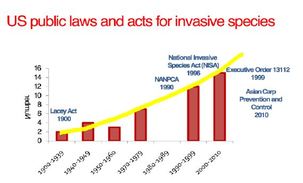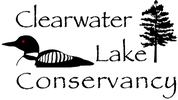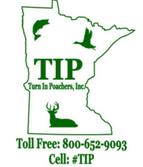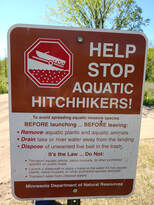|
New Awareness Could Be Solution To Minnesota’s InvasivesAn Article by Tom Zenanko, a life-long resident of Minnesota. He has made his living as an outdoor communicator for 40 years.
In writing this story I was shocked with the lack of knowledge our legislature and even our DNR has for problem solving and I am here to show you the problems AND to show you solutions to those problems. Maybe we can ultimately get someone in the Legislature to author a bill to revoke the Invasives Species laws we have now. And to establish a new, longterm action plan for invasives that will not restrict sportsmen from enjoying the great outdoors.
Let’s set the stage….Who is to blame for this mess? The answer is not easy to put a finger on. Sure, it was the Fish and Wildlife officials on the national and state levels who were aware and did nothing to stop boats from bringing in a wide variety of invasives into our ecosystem, but we can’t blame all of them on just that. While the press focuses on the crisis with Zebra Mussels and Eurasian Milfoil, it is the common carp that has done more damage to our sport fisheries in this state than any invasive to date. Slowly they have spread to every part of our state, without the help of those heartless sportsmen. Where is the press on one of our oldest and biggest threats to our lakes? Most people today don’t even realize the carp is a bad fish anymore, because the press has other fish to fry with the general public, the common carp has become just another fish in Minnesota. We cannot point fingers at the lack of regulations to prevent such problems, the regulations exist. In many ways, it is the landscape of the modern world we live in… invasives come, and are here to stay. Remember, not all invasives have the image of death and destruction like carp. Pheasants, turkeys and salmon are not native to this state, but they are a few we enjoy. To keep things simple, the bullet has left the gun by the time we hear about a new invasive. Did you know there are 180 lesser known invasives in the great lakes today? The key fact and one I will keep repeating over and over again to anyone who will listen, we CANNOT stop the spread of invasives. No one has EVER stopped them. We cannot put the genie back in the bottle, in the end; they will take their place in our new Minnesota landscape. This is the important thing to remember about the CRISIS or the WAR as some put it against invasives, they want you to believe that increased restrictions on human activity now will magically put that genie back in the bottle…It will not, but as I have already stated, in politics, you never want to waste a good crisis to legitimize a growth in government. 
Here is a chart done by Dr. Chris Waters, a regional Aquaculture
Extension Specialist for this part of the country. It shows the rapid increase in federal laws to limit the spread by focusing on changing human behavior around our resources. I think everyone will agree these increased laws have not yielded the success they wanted. It is only natural for law makers to make even more laws as they have in Minnesota and expect different results. Let’s look at who is fanning the flames of this crisis to better understand why the media claims it to be a “crisis”. It begins with lake associations who for years have tried and failed to find a way to keep nonhome owners off their lakes. For years, they have struggled to get the government behind them to limit lake access, they start by limiting parking, or how or when you can use a lake to discourage people from coming there. These “concerned associations “are now jumping for joy because they have been given the legal right to control their lake access by the Minnesota State Legislature… The unintended consequences of this law passed during a manufactured crisis is a dream come true to cities and communities wanting to close- off access to their local lakes and it began only weeks after the law was passed! On a recent visit to Lake Waconia, an association inspector kept me off the lake because he did not see me put in my drain plug while I was waiting to launch my boat. In this case, he made-up is own version of the law and with clipboard in hand, recorded my license numbers and with this type of intimidation, I went to another lake.
There is no doubt the Sportsmen lost the PR battle with invasives and I’m sure if you asked 10 out of 10 non-sportsmen who even knew what a zebra mussel is, would tell you it was the “fishermen” who caused this problem in the first place! When was the last time you saw the benefits of zebra mussels in the headlines? A recent University of Wisconsin study revealed lakes contaminated with zebra mussels on average saw 10% higher property values than lakes without zebra mussels? When a popular lake is discovered to be infested, it makes headlines…. And it is the fishermen who are labeled as the ones who knowingly and purposely brought these lake killing invasives into the ecosystem. The press and the Home Owners Associations are working hand in hand to keep the myth going and the DNR sits on the sidelines and says: “Tell us what you want us to do about it!” The answer from the Legislature is PLEASE save us from the destruction of our resource by these heartless fishermen. So the DNR starts the dance. By law, they cannot limit access to the lakes, but if you give them a new law, they can find ways for the local cities to limit those who trailer a boat to those lakes. They hire vast teams of Invasive Species Prevention Coordinators and all their staffs who obviously want to keep their job, so they write press releases using words like WAR, CRISIS and it is your responsibility to STOP invasives. Don’t be surprised by all the “crisis” talk, this is what they were hired to do… the senior management at the DNR know they have zero chance of stopping anything, and the word “prevention” in their job title actually gives the impression to the general public they are actually working to prevent something. After reading this article, please forward it to your family and friends so they understand why sportsman are about to lose out big as the DNR sits on the sidelines asking:” What do you want us to do?” If the DNR was looking out for the Sportsmen and women of this state, they would be trying to slow down the runaway PR blitz against sportsmen and tell the public and our legislators the truth about invasives… To continue reading the article open the following link to page 4: Minnesota Invasives
|


